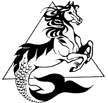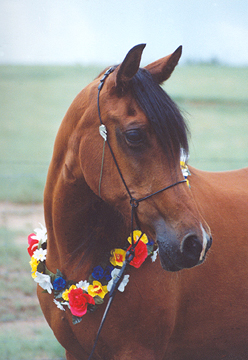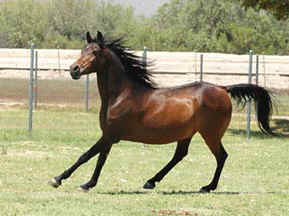
Bint Al Bahr Arabians
Preservation Breeders of Straight Babson Egyptians
 |
Bint Al Bahr Arabians Preservation Breeders of Straight Babson Egyptians |
![]()
Photo Tips - Page 2
 |
A
few days ahead Scout for good background and lighting a few days ahead of the scheduled photo shoot. This is the first step to getting a good photo. Choose your location with light in mind. For lighting, your shadow must point at the horse. It is best to look for your location at the time of day that you will be shooting. The softer light of early morning or early evening will keep your shadows to a minimum. The soft light from a bright hazy day will also work for you with the added advantage of not having to worry about harsh shadows. |
| Try to select
a properly lit background that is level, uncluttered and suitable to the color
of the horse. Light colored horses
need to be shot against dark backgrounds and dark horses against light colored
backgrounds. This step may (or may
not) only take a few moments but it is important since it is a key factor in the
success of your project. The same
spot that worked so well in April may not work at all in June due to seasonal
light direction so recheck before each photo session. |
 |
A simple
uncluttered background helps to focus the attention on the horse. Consider the
trees and shrubs, will they add or distract from your photo? We once did
“trotting horse” photos with trees in the background and when we got them
back most of the photos had “broccoli” (trees) riding on the horses
hindquarters. They became known as the
"Broccoli Butt Photos." Which is not how your pretty mare wants to be
remembered! A background of
a flowering tree may look great through the lens as you shoot it but when the
photos come back you may find the background is too busy and distracts from the
horse. If you just have to try to have
those beautiful roses in the background, shoot some more shots with a plain
background as a backup. Mow the
grass if needed so the horse’s feet will show.
If you can not find such a location consider whether your neighbor might
or even trailer out to a suitable location.
It always helps to have backup spot to shoot in case something isn’t
working in the selected location.
Buy LOTS of
film. Plan on more rolls than you will need. Ten rolls is not an unreasonable
amount to have on hand for 1 or 2 horses. You
may or may not need it all. Better
to have more film than you need than not enough.
I like 35mm 200ASA Fuji film as I find that horse colors come out truer to
color with this film but a lot depends on who develops the film. It is also a
good idea at this time to locate your spare camera battery.
My camera batteries last me about a year but they usually quit on me when
I most need them so I now keep a spare new battery in my camera bag, especially
on farm visits.
Remind the people that agreed to assist you of the time and day they need to be there. You will need a minimum of three people, with 4 being even better. You need at least three people, one to shoot the photos, one to hold the horse and one to get the ears up. If you found a fourth person, their job is to help with the grooming and to help the ears up person, handing props or bringing out another horse. Every job is very important and the results of any photo shoot is a team effort.
 |
All
of us who have tried
to shoot photos by ourselves know the value of having help.
How do you get
help? If you don’t find
prospective help at your dinner table then find a helpful friend and agree to
shoot photos or be their helper for one of their horse’s photo shoot the
next weekend. I think we all can
agree, whatever the breed, we all need help getting photos taken.
Study photos that you like in magazines to see how a horse is standing, where
the legs are or how
the headshot is framed. Think about
what makes that photo work and how you might recreate that look. |
Look at your horse and be realistic about your horse’s beauty, work to emphasis her best points. Look to see what angles she looks best from then use them for your photo shot.
Your
cursor on the photos will tell you more about the photo and the horse.
![]()